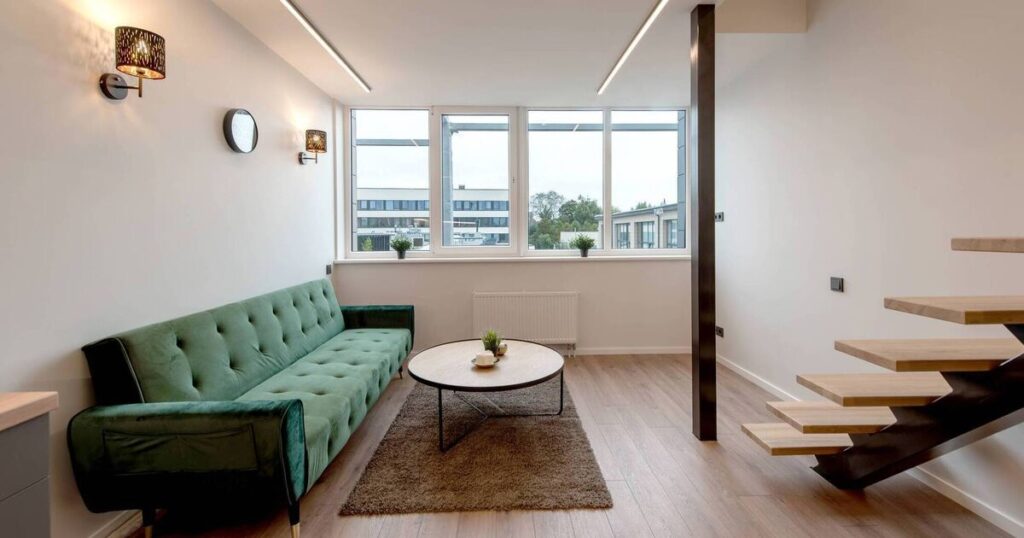I almost feel silly writing this advice, as if house buyers in Ireland have the luxury of bringing a checklist when viewing houses. With queues often trailing halfway down the street, you’re lucky if you get a few minutes to glance at a house these days before throwing money at it, not to mind thoroughly inspecting it.
OK, I’m exaggerating, but only a bit. And it is worth remembering how easy it is to get caught up in the madness, with the endless queues and bids and traipsing around getting your hopes up only to be outbid again.
Buying a house in Ireland these days is hard, but you shouldn’t settle for less than your hard-earned money deserves.
You should arm yourself with as much knowledge as possible so that you don’t panic-buy a money pit. Here’s my guide to help you view homes with a critical eye, so you can spot the right home for you without missing any red flags.
Don’t simply fall in love with the styling.
While staging helps highlight a home’s potential, don’t let it distract you from the bones of the place. Similarly, don’t let awful furniture put you off what could be a gorgeous home. Try to ignore the styling and focus on layout and how it flows, ceiling height, natural light, and orientation. Don’t be afraid to move curtains or open blinds to get a true sense of how much daylight the rooms actually get
Check the walls and be suspicious of fresh paint. Run your hand along the walls. Are they cold or damp to the touch? Be sure to check the lower parts of the walls too, for rising damp. Any peeling paint, visible mould, or condensation marks? If the room looks freshly re-done, don’t be shy about asking why — was it simply decorative, or covering something up? It’s hard to visually identify asbestos, but if the house was built before 1999, then ask outright about it.
Walk through the home like you already live there — try to map out your daily activities. Does the layout suit your lifestyle? Can you imagine coming in with shopping bags, cooking dinner, or making space to work? Storage is often overlooked on a first visit. Open wardrobes, presses, and hot presses, check for piles of clutter or bikes crammed into the hallway, and make sure there is enough storage in the right place to meet your needs.
Always view more than once and at different times.
A house can feel very different at 10am on a Tuesday versus 7pm on a Friday. Try to view during daylight and come back in the evening to check out the neighbourhood. Visit on weekends when neighbours are more likely to be home. This will give you a real sense of evening light, parking availability, noise levels, general atmosphere, and any antisocial behaviour.
Neighbours are a goldmine of information. Most people are happy to chat, especially if they’ve lived in the area for a while. Ask about local traffic, bin collections, noise and street activity, any recent or planned developments, and any planning and renovation tips (or pitfalls) they’ve discovered. You’ll likely learn more from a five-minute chat with a neighbour than from any estate agent’s brochure!
Don’t just glance around — use your eyes (and nose) like a building inspector. Check ceilings and corners for signs of water damage. Look at floorboards and tiles for sagging or cracking, and ensure the floors are level. Examine window and door frames for signs of rot or damp.
Look underneath rugs or behind curtains for hidden issues. Stick your nose into cupboards, especially under sinks for any signs of leaking. Don’t forget to inspect the garden for signs of invasive species like knotweed.
Check the heating and water systems. Ask about the boiler: is it gas or electric? What condition is it in, and when was it last serviced? Does the property have heating zones, and how is it insulated? Turn on the taps and the shower. Check water pressure (hot and cold), how long it takes for hot water to come through, and look for any signs of corrosion or leaks around pipes and tanks. Don’t be afraid to ask what the average monthly energy bills are.
Take a good look at the consumer unit. Is it an old fuse box or a modern trip-switch board? Are the sockets and switches yellowing, cracked, or mismatched? This can give you a rough idea of whether the house may need rewiring. Again, don’t forget to ask about monthly electricity bills.
A very strong scent of air freshener or cleaning products may be covering something.
Don’t be afraid to stick your nose under sinks or into cupboards, especially around plumbing. A faint musty smell can be a sign of hidden damp, even if you can’t see it yet.
After viewing, look up the address online. Make sure it hasn’t been relisted recently at a different price — if so, ask why. Check out the property price register in the area to gauge whether you’re paying a fair price. Look up local gardaí reports or break-ins. Search for planning applications or redevelopment projects that might impact you. If you’re thinking about extending or renovating, check whether others on the street have been granted (or denied) planning permission, and what for. It could save you disappointment down the line.
- Got a question for our team? Email home@examiner.ie


